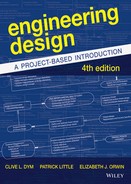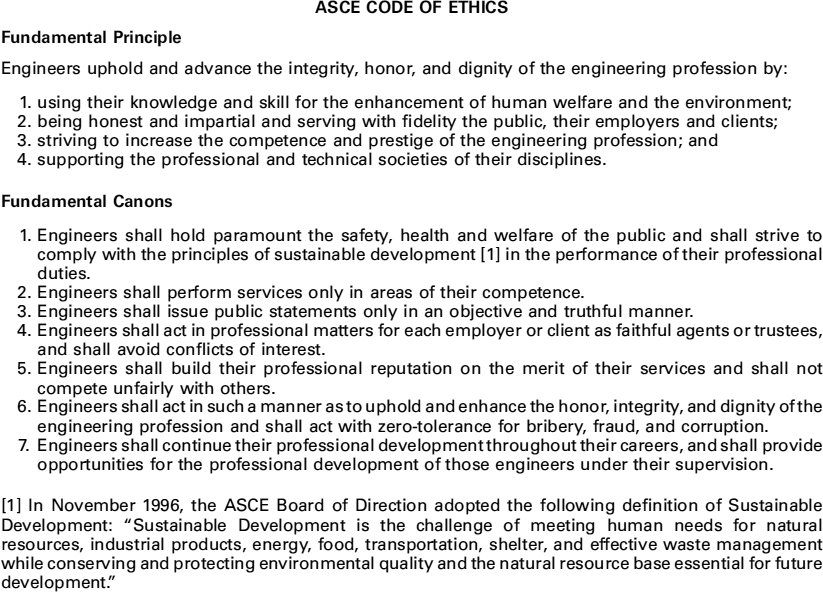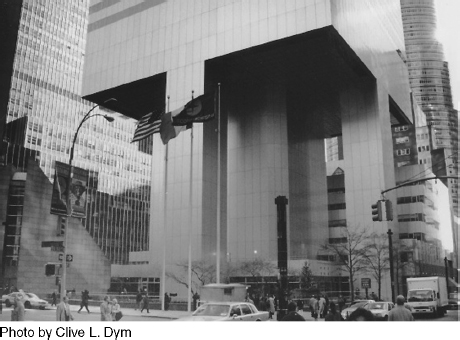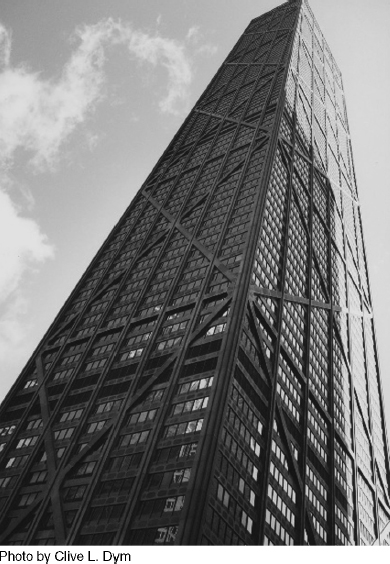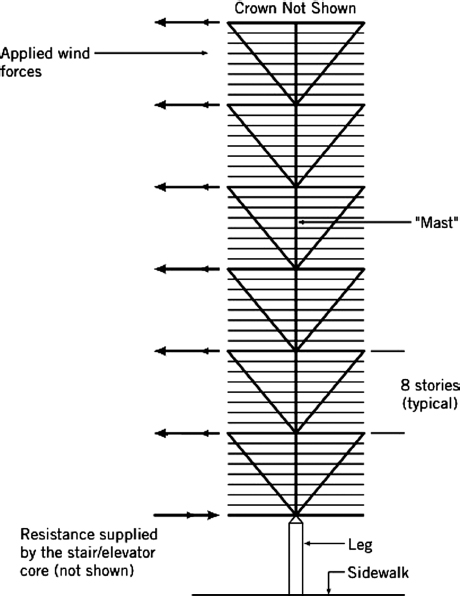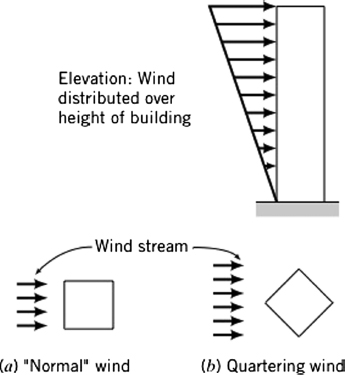Design is not just a technical matter.
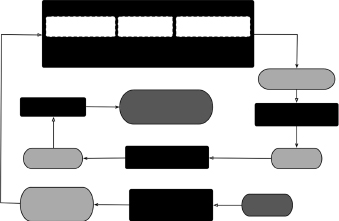
DESIGN IS fundamentally a human endeavor, a social activity. The design process depends upon relationships among members within a design team, with clients and manufacturers, and with the purchasers and users of designed devices. In many cases, designs also affect people who were not part of the designer–client–user triangle we discussed in Chapter 1. To design means to accept responsibility for creating designs: designers are influenced by the society in which they work, and designed products influence society. That is why we must consider ethics and ethical behavior in our examination of how engineers design things.
17.1 ETHICS: UNDERSTANDING OBLIGATIONS
Words like ethics, morals, obligations, and duty are used in a variety of ways in everyday life, including seemingly contradictory or unclear ones. As we did with many of the engineering terms earlier in the book, we start with some definitions. First, the word ethics:
ethics 1: the discipline dealing with what is good and bad and with moral duty and obligation 2 a: a set of moral principles or values b: a theory or system of moral values c: the principles of conduct governing an individual or group
Since it is referenced so often in the definition of ethics, the word moral:
moral 1 a: of or relating to principles of right or wrong in behavior b: expressing or teaching a conception of right behavior
Besides defining a discipline or field of study, these definitions define ethics as a set of guiding principles or a system that people can use to help them behave well. Most of us learn right and wrong from our parents, or perhaps as a set of beliefs from one of the religious traditions that emphasize faith in God (e.g., Christianity, Judaism, and Islam) or those that stress faith in a right path (e.g., Buddhism, Confucianism, and Taoism). However we learn about them, virtually all of us have a deep connection with notions such as honesty and integrity, and about the injunction to treat others as we would want to be treated ourselves.
If we already know these things, why do we need another, external set of rules? If we don't, and the law doesn't keep us in line, what is the use of a set of ethical principles? The answer is that the lessons we learn at home, in school, and in religious forums may not provide enough explicit guidance about many of the situations we face in life, especially in our professional lives. In addition, given the diversity and complexity of our society, it is helpful to have standards of professional behavior that are universally agreed upon, across all of our traditions and individual upbringings.
Our professional lives are also complicated because our responsibilities may involve obligations to many stakeholders, some of whom are obvious (e.g., clients, users, the immediately surrounding public) and some of whom are not (e.g., some government agencies, professional societies). We will elaborate these obligations later in this chapter, but we note for now that these obligations can conflict. For example, a client may want one thing, while a group of people affected by a design may want something different. Further, some of those people may not even know how they are being affected until after the design is complete and the design has been implemented. Just as we found in evaluating and ranking objectives during conceptual design, there is no simple formula or algorithm we can apply to decide among the various parties who may be influenced by our design. The priorities our clients, users, and the designer place on objectives are subjective in nature; so too is our personal assessment of the relative importance that we attach to our conflicting obligations. Professional codes of ethics provide a means of reconciling such competing obligations.
Consider the famous case in which group of engineers tried unsuccessfully to delay the launch of the space shuttle Challenger on January 28, 1986. While severe doubt was expressed by some engineers about the safety of the Challenger's O-rings because of the cold weather before the flight, the upper management of Morton-Thiokol, the company that made the Challenger's booster rockets, and NASA approved the launch. These managers, many of whom were themselves experienced engineers, determined that their concerns about Morton-Thiokol's image and the stature and visibility of NASA's shuttle program outweighed the judgments of other engineers who were closer to the booster design. The Morton-Thiokol engineers ultimately publicized the overruling of their recommendation not to launch by engaging in whistleblowing, where someone “blows the whistle” in order to stop a faulty decision made within a company, agency, or some other institution.
Whistleblowing is not new or unique. Another famous case is that of an industrial engineer, Ernest Fitzgerald, who spoke out on major cost overruns in the procurement of an Air Force cargo plane. The Air Force was so displeased with Fitzgerald's actions that it took actions to keep him from further work on the plane: It “lost” his Civil Service tenure and then reconstructed that part of the bureaucracy in which had Fitzgerald worked so as to eliminate his position! After an arduous and expensive legal battle, Fitzgerald earned a substantial settlement for wrongful termination and was reinstated in his position.
While such stories seem discouraging, they also show heroic behavior under trying circumstances. More to the point, these examples show how “doing what's right” can be perceived quite differently within an organization. An engineer may be faced with a clash of obligations that lies at the crux of any discussion of engineering ethics. If that happens, to whom can the designer or engineer turn for help? While part of the answer lies in the engineer's personal understanding of ethics, another part of the answer lies in the support of professional colleagues and peers. One of the primary sources of such insight and guidance is the professional engineering societies and their codes of ethics.
17.2 CODES OF ETHICS: WHAT ARE OUR PROFESSIONAL OBLIGATIONS?
Imagine you are a mining engineer who has been engaged by the owner of a mine to design a new shaft extension. As part of that design task you survey the mine and find that part of it runs under someone else's property. Are you obligated to simply complete the survey and the design for the mine owner who is paying you, and then go on to your next professional engagement?
Suppose you suspect that the mine owner hasn't notified the landowner that his mineral rights are being excavated out from underneath him. Should you do something about that? If so, what? Further, what compels you to do something? Is it personal morality? Is there a law? How are you responsible, and to whom?
The chain of questions just started can easily be lengthened, and the situation made more complicated. For example, what if the mine was the only mine in town and its owner controlled your livelihood, and those of many town residents? If you find out that the mine runs under an elementary school, does that change things?
This story highlights some of the actors and obligations that could arise in an engineering project. In fact, scenarios such as this occurred late in the 19th century and early in the 20th; such situations provided part of the impetus to the formation of professional societies and the development of codes of ethics as a form of protection for their members.
Over time, the professional societies also undertook other kinds of activities, including promulgating design standards, and providing forums for reporting research and innovations in practice. The professional engineering societies continue to play a leading role in setting ethical standards for designers and engineers. These ethical standards clearly speak to the various and often conflicting obligations that an engineer must meet. The societies also provide mechanisms for helping engineers resolve conflicting obligations, and, when asked, they provide the means for investigating and evaluating ethical behavior.
Most professional engineering societies have published codes of ethics. We show the codes of ethics of the American Society of Civil Engineers (ASCE) in Figure 17.1 and of the Institute of Electronics and Electrical Engineers (IEEE) in Figure 17.2. While both codes emphasize integrity and honesty, they do appear to value certain kinds of behavior differently. For example, the ASCE code enjoins its members from competing unfairly with others, a subject not mentioned by the IEEE. Similarly, the IEEE specifically calls for its members to “fairly treat all persons regardless of such factors as race, religion, gender …” There are other differences as well in the styles of language. The ASCE presents a set of injunctions about what engineers “shall” do, while the IEEE code is phrased as a set of commitments to undertake certain behaviors.
FIGURE 17.1 The code of ethics of the ASCE, as modified July 2006. It is similar, although not identical, to the code adopted by the IEEE that is displayed in Figure 17.2.
Notwithstanding these differences, both codes of ethics set out guidelines or standards of how to behave with respect to: clients (e.g., ASCE's “as faithful agents or trustees”); the profession (e.g., IEEE's “assist colleagues and coworkers in their professional development”); the law (e.g., IEEE's “reject bribery in all its forms”); and the public (e.g., ASCE's “shall issue public statements only in an objective and truthful manner”). Perhaps most noteworthy, both place a primary concern on protection of the health, safety, and welfare of the public. We will return to this paramount principle in Section 17.5.
The codes of ethics, along with the interpretations and guidance offered by the societies, lay out “rules of the road” for dealing with conflicting obligations, including the task of assessing whether these conflicts are “only” of perception or of a “real” and potentially damaging nature.
There are some points to make regarding the professional societies and their codes. First, the differences in the codes reflect different styles of engineering practice in the various disciplines much more than differences in their views of the importance of ethics. For example, most civil engineers who are not employed by a government agency work in small companies that are people-intensive, rather than capital-intensive. These firms obtain much of their work through public, competitive bidding. Electrical engineers, on the other hand, typically work in the private sector for corporations that sell products more than services, one result of which is that they have significant manufacturing operations and are capital-intensive. Such different practices produce different organizational cultures and, hence, different ways of expressing ethical standards.
FIGURE 17.2 The code of ethics of the IEEE, dated February 2006. How does the IEEE code of ethics differ from that adopted by the ASCE that is displayed in Figure 17.1?
A second point is that the professional societies, notwithstanding their promulgation of codes of ethics, have not always been seen as active and visible protectors of whistleblowers and other professionals who raise concerns about specific engineering or design instances. This situation is improving, steadily if slowly, but many engineers still find it difficult to look to their societies, and especially their local branch sections, for first-line assistance and support in times of need. Of course, as we all make ethical behavior a more visible priority, the need for such support may lessen, and its ready availability will surely increase.
Finally, we should note that the codes of ethics we have described are those found in the United States and Canada, which are not necessarily the same as those in other parts of the world. In countries with a strongly Islamic culture and government, for example, the codes of ethics often reflect an alignment between religious values and professional practice that seems alien to our tradition of separating church and state. Similarly, the code of ethics of the Verein Deutscher Ingenieure (VDI), or Association of German Engineers, is based on the historical need of German engineers to reflect upon and respond to the willingness of many of their colleagues to work in support of the Nazis during the 1930s and 1940s. It is important for us, as professional engineers, to understand and respond to the culture in which we work, while remaining true to our own values.
17.3 OBLIGATIONS MAY START WITH THE CLIENT…
Let us consider in greater depth our obligations to a client or to an employer. As designers or engineers, we owe our client or employer a professional effort at solving a design problem, by which we mean being technically competent, conscientious, and thorough, and that we should undertake technical tasks only if we are properly “qualified by training or experience.” We must avoid any conflicts of interest, and disclose any that may exist. And we must serve our employer by being “honest and impartial” and by “serving with fidelity …” Most of these obligations are clearly delineated in codes of ethics (e.g., compare the quotes with Figures 17.1 and 17.2), but there's at least one curious obligation on this list: What does it mean to “serve with fidelity”?
A thesaurus would tell us that fidelity has several synonyms, including constancy, fealty, allegiance, and loyalty. Thus, one implication we can draw from the ASCE code of ethics is that we should be loyal to our employer or our client. This suggests that one of our obligations is to look out for the best interests of our client or employer, and to maintain a clear picture of those interests as we do our design work. But loyalty is not a simple, one-dimensional attribute. In fact, clients and companies earn the loyalty of their consultants and staffs in at least two ways. One, called agency-loyalty, derives from the nature of any contracts between the designer and the client (e.g., “work for hire”) or between the designer and her employer (e.g., a “hired worker”). As it is dictated by contract, agency-loyalty is clearly obligatory for the designer. A second kind of loyalty, identification-loyalty, is more likely to be perceived as optional. It stems from aligning oneself with the client or company because the engineer admires its goals or sees its behavior as mirroring his or her own values. To the extent that identification-loyalty is optional, it will be earned by clients and companies only if they reciprocate by demonstrating loyalty to their own staff designers.
Agency-loyalty provides one reason to maintain a “design notebook” to document design work. As we have noted before, keeping such a record is good design practice because it is useful for recapitulating our thinking as we move through different stages of the design process and for real-time tracking. A dated design notebook also provides legal documentation of how and when new patentable ideas were developed. Such documentation is essential to an employer or client if a patent application is in any way challenged. Further, as is typically specified in contracts and employment agreements, the intellectual work done in the creation of a design is usually the intellectual property of the client or the employer. A client or an employer may share the rights to that intellectual property with its creators, but the fundamental decisions about the ownership of the property generally belong to the client or owner. It is important for a designer to keep that in mind, and also to document any separate, private work that she is doing, just to avoid any confusion about who owns any particular piece of design work.
Since identification-loyalty is optional, it provides fertile ground for clashes of obligations because other loyalties have the space to arise. As we discuss further in Section 17.5, modern codes of ethics normally articulate some form of obligation to the health and welfare of the public. For example, the ASCE code of ethics (viz., Figure 17.1) suggests that civil engineers work toward enhancing both human welfare and the environment, and that they “shall hold paramount the safety, health, and welfare of the public …” Similarly, the IEEE code (viz., Figure 17.2) suggests that its members commit to “making engineering decisions consistent with the safety, health, and welfare of the public …” These are clear calls to engineers to identify and honor loyalties beyond their employer. It was just such divided loyalties that emerged in the cases of whistleblowing discussed above.
In the case of the explosion of the Challenger, those who argued against its launching felt that lives would be endangered. They placed a higher value on the lives being risked than they did on the loyalties being demanded by Morton-Thiokol (i.e., to secure its place as a government contractor) and by NASA (i.e., to its ability to successfully argue for the shuttle program before Congress and the public). Similar conflicting loyalties between employer and the public emerged for engineers as toxic waste sites were cleaned up under the Superfund program of the Environmental Protection Agency (EPA). There are other cases in which engineers were apparently willing to rank their loyalties to their companies first, to the point where falsified test data were reported to the government (by engineers and managers at the Ford Motor Company), or parts known to be faulty were delivered to the Air Force (by engineers and managers at the B. F. Goodrich Company).
An apparent disloyalty to a company or an organization may sometimes be, in a longer term, an act of greater, successfully merged loyalties. When the Ford Pinto was initially being designed, for example, some of its engineers wanted to perform crash tests that were not required by the relevant U.S. Department of Transportation regulations. The managers overseeing the car's development felt that such tests could not benefit the program and, in fact, might only prove to be a burden. Why run a test that is not required, only to risk failing that test? The designers who proposed the tests were seen as disloyal to Ford and to the Pinto program. In fact, the placement of the drive train and the gas tank resulted in fiery crashes, lives lost, and major public relations and financial headaches for Ford. Clearly, Ford would have been better off in the long run to have conducted the tests, so the engineers who proposed them could be said to have been looking out for the company's long-term interests.
If there is one point that emerges from the discussion thus far, it is that ethical issues do not arise from a single obligation. Indeed, were issues so easily categorized, choices would vanish and there would be no ethical conflicts. The very existence of professional codes of ethics, however, testifies to the reality of conflicting obligations and provides guidance to mediating those conflicts.
17.4 … BUT WHAT ABOUT THE PUBLIC AND THE PROFESSION?
When people behave responsibly, things can turn out well even in bad situations, which we will demonstrate with a true story. In fact, to start with the ending, the protagonist-hero of this story said, “In return for getting a [professional engineering] license and being regarded with respect, you're supposed to be self-sacrificing and look beyond the interests of yourself and your client to society as a whole. And the most wonderful part of my story is that when I did it nothing bad happened.”
Our hero is the late William J. LeMessurier (pronounced “LeMeasure”) of Cambridge, Massachusetts, one of the most highly regarded structural engineers and designers in the world. He served as the structural consultant to a noted architect, Hugh Stubbins, Jr., for the design of a new headquarters building for Citicorp in New York City. Completed in 1978, the 59-story Citicorp Center is still one of the most dramatic and interesting skyscrapers in a city filled with some of the world's great buildings (see Figure 17.3). In many ways, LeMessurier's conceptual design for Citicorp resembles other striking skyscrapers in that it used the tube concept in which a building is designed as a tall, hollow tube that has a comparatively rigid or stiff tube wall. (In structural engineering terminology, the tube's main lateral stability elements are located at the outer perimeter and tied together at the corners.) Fazlur Kahn's John Hancock Center in Chicago is a similar design (see Figure 17.4). The outer “tube” or “main lateral stability elements” are the multistory diagonal elements that are joined to large columns at the corners. Kahn's design benefited from a deliberate architectural decision to expose the tube's details, perhaps to illustrate the famous dictum that form follows function (which originated with Louis Sullivan, the noted Chicago architect who was Frank Lloyd Wright's mentor).
FIGURE 17.3 One view of the 59-story Citicorp Center, designed by architect Hugh Stubbins, Jr., with William J. LeMessurier serving as structural consultant. One of this building's notable features is that it rests on four massive columns that are placed at the midpoints of the building's sides, rather than at the corners. This enabled the architects to include under the Citicorp's sheltering canopy a new building for St. Peter's Church.
LeMessurier's Citicorp design was innovative in several ways. One, not visible from the outside, was the inclusion of a large mass, floating on a sheet of oil, within the triangular roof structure. It was added as a damper to reduce or damp out any oscillations the building might undergo due to wind forces. Another innovation was LeMessurier's adaptation of the tube concept to an unusual situation. The land on which the Citicorp Center was built had belonged to St. Peter's Church, with the church occupying an old Gothic building on the lot's west side. When St. Peter's sold the building lot to Citicorp, it also negotiated that a new church be erected “under” the Citicorp skyscraper. In order to manage this, LeMessurier moved the “corners” of the building to the midpoints of each side (see Figure 17.5). This enabled the creation of a large space for the new church because the office tower itself was then cantilevered out over the church, at a height of some nine stories. Looking at the sidewalls of the tube—and here we have to peel off the building's skin because architect Stubbins did not want the structures exposed as they were in the Hancock tower—we see that the wall's rigidity comes from large triangles, made up of diagonal and horizontal elements, that all connect at the midpoints of the sides. Thus, LeMessurier's triangles serve the same purpose as Kahn's large X-frames.
FIGURE 17.4 The 102-story John Hancock Center, designed by the architectural firm of Skidmore, Owings and Merrill, with Fazlur Kahn serving as structural engineer. Note how the exposed diagonal and column elements make up the tube that is the building's underlying conceptual design.
The ethics problem arose soon after the building was completed and occupied. LeMessurier received a call from an engineering student who was told by a professor that the building's columns had been put in the wrong place. LeMessurier was very proud of his idea of placing the columns at the midpoints. He explained to the student how the 48 diagonal braces he had superposed on the midspan columns added great stiffness to the building's tube framework, particularly with respect to wind forces. The student's questions sufficiently intrigued LeMessurier that he later reviewed his original design and calculations to see just how strong the wind bracing system would be. He found himself looking at a case that was not covered under then-current practice and building codes. Practice at the time called for wind force effects to be calculated when the wind flow hit a side of a building dead on, that is, normal to the building faces. However, the calculation of the effect of a quartering wind, under which the wind hits a building on a 45° diagonal and the resulting wind pressure is then distributed over the two immediately adjacent faces (see Figure 17.6), had not been called for previously. A quartering wind on the Citicorp Center leaves some diagonals unstressed and others doubly loaded, with calculated strain increases of 40%. Normally, even this increase in strain (and stress) would not have been a problem because of the basic assumptions under which the entire system was designed.
FIGURE 17.5 A sketch of LeMessurier's Citicorp design. Here the tube is made up of (unexposed) diagonal elements, organized as rigid triangles, and connected to the four columns at the midpoints of the sides of the building. Adapted from Civil Engineering.
However, LeMessurier learned a few weeks later that the actual connections in the finished diagonal bracing system were not the high-strength welds he had stipulated. Rather, the connections were bolted because Bethlehem Steel, the steel fabricator, had determined and suggested to LeMessurier's New York office that bolts would be more than strong enough and, at the same time, significantly cheaper. The choice of bolts was sound and quite correct professionally. However, to LeMessurier the bolts meant that the margin of safety against forces due to a quartering wind—which, again, structural engineers were not then required to consider—was not as large as he would have liked. (It is interesting to note that while New York City's building code did not then require that quartering winds be considered in building design, Boston's code did—and had since the 1950s!)
Spurred by his new calculations and the news about the bolts, and by hearing of some other detailed design assumptions made by engineers in his New York office, LeMessurier retreated to the privacy of his summer home on an island in Maine to carefully review all of the calculations and changes and their implications. After doing a member-by-member calculation of the forces and reviewing the weather statistics for New York City, LeMessurier determined that statistically, once every 16 years the Citicorp Center would be subjected to winds that could produce a catastrophic failure. Thus, in terminology used by meteorologists to describe both winds and floods, the Citicorp Center would fail in a 16-year storm—when it had supposedly been designed to withstand a 50-year storm. So, what was LeMessurier to do?
FIGURE 17.6 A sketch of how wind forces act on buildings. (a) This is the standard case of wind streams being normal or perpendicular to the building faces. It was the only one called for in design codes at the time the Citicorp center was designed. (b) This is the case of quartering winds, in which case the wind stream come along a 45° diagonal and thus simultaneously applies pressure along two faces at once.
In fact, LeMessurier considered several options, reportedly including driving into a freeway bridge abutment at high speed. He also considered remaining silent, as he tried to reassure himself that his innovative rooftop mass damper actually reduced the probabilities of such failure to the 50-year level. On the other hand, if the power went out, the mass damper wouldn't be there to help. So, what did LeMessurier actually do?
He first tried to contact the architect, Hugh Stubbins, who was away on a trip. He then called Stubbins' lawyer, after which he talked with his own insurance carrier and then with the principal officers of Citicorp, one of whom had studied engineering before choosing to become a banker. While some early consideration was given to evacuating the building, especially since hurricane season was just over the horizon, it was decided instead that all of the connections at risk should be redesigned and retroactively fixed. Steel plate “Band-Aids,” 2 in. thick, would be welded onto each of 200 bolted connections. However, there were some very interesting implementation problems, only a few of which we mention here. The building's occupants had to be informed without being alarmed, because the repair work would go on every night for 2 months or more. The public had to be informed why the bank's new flagship headquarters suddenly needed immediate modifications. (In fact, the entire process was open and attentive to public concerns.) Skilled structural welders, who were in short supply, had to be found, as did an adequate supply of the right grade of steel plate. Discrete, even secret, evacuation plans had to be put in place, just in case an unexpected storm came up while the repairs were being made. And New York City's Building Commissioner and the Department of Buildings and its inspectors had to be brought into the loop because they were central to resolving the problem. They had to be informed about the problem and its proposed solution, and they had to agree to inspect that solution. All in all, a dazzling array of concerns, institutions, and, of course, personalities.
In the end, the steel Band-Aids were applied and the entire business was completed professionally, with no finger pointing and no public assignments of blame. LeMessurier, who had thought his career might precipitously end, came away with still greater stature, occasioned by his willingness to face up to the problem candidly and propose a realistic, carefully crafted solution. In the words of one of the engineers involved in implementing LeMessurier's solution, “It wasn't a case of ‘We caught you, you skunk.’ It started with a guy who stood up and said, ‘I got a problem, I made the problem, let's fix the problem.’ If you're gonna kill a guy like LeMessurier, why should anybody ever talk?”
This is a case where everyone involved behaved well. In fact, it is to everyone's credit that all of the participants acted with a very high standard of professionalism and understanding. It is, therefore, a case that we can study with pleasure, particularly as engineers. It is also a case that could have gone other ways, so we will close our discussion by posing a few questions that you, the reader, might face were you in LeMessurier's position:
- Would you have “blown the whistle,” or not?
- What would you have done if you determined that the revised probability of failure was higher (i.e., worse) than for the original design, but still within the range permitted by code?
- What would you have done if your insurance carrier had said to “keep quiet”?
- What would you have done if the building owner, or the city, had said to “keep quiet”?
- Who should pay for the repair?
17.5 ON ENGINEERING PRACTICE AND THE WELFARE OF THE PUBLIC
It is easy to imagine a scenario where we are asked to design a product that we think needn't be made, or perhaps even shouldn't be made. Earlier in this book, for example, we referred to the design of a cigarette lighter, which we also thought of as an igniter of leafy matter. While this example seems trivial, even nonsensical, it points to another facet of divided loyalties. It suggests that designing cigarette lighters might somehow be morally troubling. In the United States today, there are many people who would consider designing cigarette lighters and cigarette-making machinery as being at least “politically incorrect,” and perhaps even morally wrong. On the other hand, isn't it up to individuals to choose to smoke or not? If a product is legal, should we allow ourselves to design it without feeling uncomfortable? How should the effect on users and the public influence our choice of project or client?
A much more serious instance that profoundly extends this line of thought emerges when we consider the design of large-scale ovens and associated specialized buildings made in Nazi Germany in the 1930s and 1940s. Or we might consider also the design of nuclear weapons in the United States or the former Soviet Union in the 1950s–1990s, and today in a growing number of developing countries. Were these designers merely being loyal to their clients, their governments, and to their societies? If so, how does this reconcile with a commitment to “human welfare and the environment”?
Recall that the codes of ethics we discussed in Section 17.2 place the health, safety, and welfare of the public in the first or paramount position. Historically, most engineers and the professional societies have focused almost entirely on the health and safety aspects of these phrases. In a manner similar to the medical profession's admonition, “First, do no harm,” engineers are committed to ensuring that the things we design are not willfully dangerous, and that the process of design is rigorous, thorough and honest about potential risks to the public. Unfortunately, the “welfare of the public” phrase has not been so deeply explored or considered. Some philosophers of technology have challenged engineers to consider these issues more carefully as well.
For most of us, concern with human welfare begins with meeting fundamental human needs, such as ensuring adequate food, water, and shelter. While starting from basic needs, and perhaps taking a cue from contemporary economics, we often extend these concerns so that “more” and “better” become synonyms. They certainly are the same for those around the world who live in abject poverty. It is, however, an open question whether “more” and “better” are the same in the developed world. Clearly, when we speak of the “welfare of the public,” we are no longer in the land of the purely technical: The welfare of the public is implicitly about what constitutes “the good life.” The depletion of key resources, the degradation of our environment, and the changes in our global climate should give us pause about what we mean by “the good life.”
The phrase “the welfare of the public” suggests that we, as engineering designers, must be aware that our work can move into the social and even political realm. For example, the ASCE has issued Guidelines to Practice that state that in order to adhere to the canons of its code of ethics (Figure 17.1) engineers should “recognize that the lives, safety, health, and welfare of the general public are dependent upon engineering judgments, decisions and practices incorporated into structures, machines, products, processes, and devices.” This guideline clearly frames the judgments, decisions, and practices as more than just technical or scientific aspects of engineering. It explicitly links them to the well-being of the public. Thus, the practice of engineering has much in common with other professions such as law and medicine: Engineers bear a special responsibility to practice their profession with an awareness of the larger environment.
Engineers must exercise a sort of social judgment when doing design because of the results that arise after design, once a device or system is released for public use. Technology is often not neutral—it has effects and consequences, only some of which can be anticipated and controlled. Technology is implicated in particular possibilities for social organization and social relationships, in the establishment and enforcement of permissions and prohibitions, and in the distribution of economic, social, and political power. Andrew Feenberg articulated this insight most clearly in his book Questioning Technology:
Technology is power in modern societies, a greater power in many domains than the political system itself. The masters of technical systems, corporate and military leaders, physicians and engineers, have far more control over patterns of urban growth, the design of dwellings and transportation systems, the selection of innovations, our experience as employees, patients and consumers, than all the electoral institutions of our society put together. But, if this is true, technology should be considered as a new kind of legislation, not so very different from other public decisions. The technical codes that shape our lives reflect particular social interests to which we have delegated the power to decide where and how we live, what kinds of food we eat, how we communicate, are entertained, healed and so on.
One of the more challenging questions facing engineers who take the welfare of the public seriously is “Who, or what, is the public?” When an engineer begins a project to design a water treatment facility, she needs to be attentive to the complexity of the public whose well-being she has committed to serve by participating in her profession. Engineers can go a long way toward satisfying this need simply by taking it seriously. This means that attending to the public interest requires us to practice an ongoing, good-faith effort to listen to affected parties and those who speak for them.
As engineers, we should realize that what we design creates publics. The engineer who proposes a highway to a group of homeowners may find to his surprise that he has created a public (and energized its opposition to the project) without ever intending to do so. Similarly, no one anticipated the scope or reach of the Internet, yet its designers surely created many “publics,” including some who used web technologies to help overthrow dictators.
17.6 ETHICS: ALWAYS A PART OF ENGINEERING PRACTICE
Ultimately, ethics is intensely personal. Returning to our question about designing cigarette lighters, the matter necessarily resolves to, should I be working on this design project? While the professional societies produce and insist upon standards of professional conduct, it is individual practitioners who practice engineering. There is no way to predict when a serious conflict of obligations and loyalties will arise in our individual lives. Nor can we know the specific personal and professional circumstances within which such conflicts will be embedded. Nor, unfortunately, is there a single answer to many of the questions posed. If faced with a daunting conflict, we can only hope that we are prepared by our upbringing, our maturity, and our ability to think and reflect about the issues that we have briefly raised here.
17.7 NOTES
Section 17.1: Martin and Schinzinger (1996) and Glazer and Glazer (1989) are very interesting, useful, and readable books on, respectively, engineering ethics and whistleblowing. Ethics emerges as a major theme in Harr (1995) tale of a civil lawsuit spawned by inadequate toxic waste cleanup.
Section 17.2: An interesting account of the historical development of the professional societies and codes of ethics if given in Davis (1992). The issues relating to international codes of ethics are discussed in Little et al. (2008).
Section 17.3: The definitions of agency- and identification-loyalty are derived from Martin and Schinzinger (1996).
Section 17.4: The Citicorp Center case is adapted from Morgenstern (1995) and Goldstein and Rubin (1996). We were greatly helped by William LeMessurier's review of the material.
Section 17.5: This section raises issues that require careful and thoughtful reading. For the sake of brevity, we cite only Arendt (1963), Harr (1995), Feenberg (1990), Little et al. (2008), and Winner (1990) among the many sources about the deep and complex issues raised in this section.
